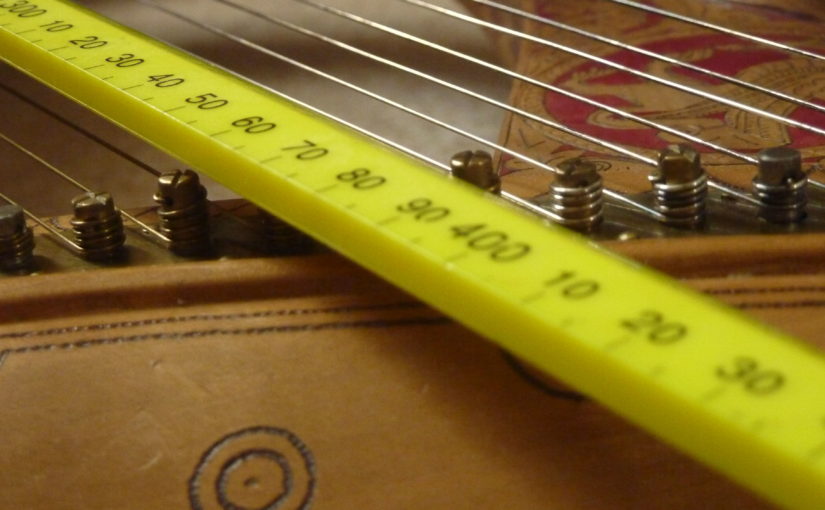I have been making silver harp strings for five years. I buy in stock silver wire and draw it down to the size required, which makes it hard as well as thin.
Today I managed to take wire-making to a whole new level. I took 5 years worth of filings and silver dust, and melted them down into a little ingot which I forged into a rod, and drew down into wire. Starting with a pile of dust I finished with a piece of 0.48mm silver wire, about 32cm long.
Unfortunately there was a flaw in the wire exactly half way along, and of course it snapped there almost as soon as I started threading it into the harp.
Using a thin metal toggle I had just enough to put one half onto the highest string of my Queen Mary harp replica. It came right up to pitch and sounds great. Here it is, wound round one of the new iron split tuning pins:
I stopped annealing it at about 2mm diameter so I rekon on this being about 75% reduction – or “extra hard”. It was pretty brittle trying to wind the toggle, which I presume is from the minute flaws and inclusions from my casting, compared to the very pure metal that is produced by the big industrial producers we usually source wire from.
Now I need to repeat the process with more scrap, trying to produce a longer and thicker finished wire…













